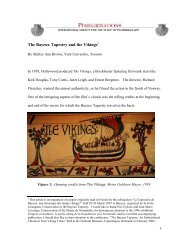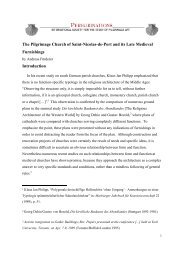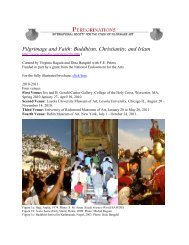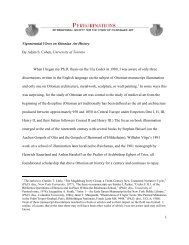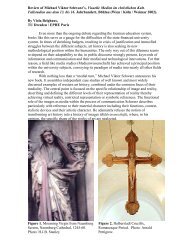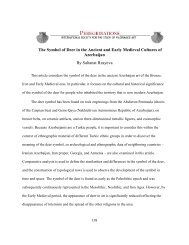The Bayeux Tapestry as a Religious - Peregrinations
The Bayeux Tapestry as a Religious - Peregrinations
The Bayeux Tapestry as a Religious - Peregrinations
You also want an ePaper? Increase the reach of your titles
YUMPU automatically turns print PDFs into web optimized ePapers that Google loves.
Animals, domestic and fant<strong>as</strong>tical, were a common element in Anglo-Saxon and Romanesque art<br />
and their presence in the <strong>Tapestry</strong> is therefore unsurprising.<br />
<strong>The</strong>re is, however, one scene in the <strong>Tapestry</strong> that would seem completely out of place<br />
within a sacred building. And that is the mysterious scene involving a rare figure in the<br />
<strong>Tapestry</strong>: a female with a name. This is Ælfgyva, a heavily robed figure whose face is<br />
apparently being stroked by a man, who from his tonsure, appears to be a cleric of some kind.<br />
(Figure 13) W<strong>as</strong> she a nun? All four of the women depicted in the <strong>Tapestry</strong> are shown heavily<br />
veiled. <strong>The</strong> designer may have borrowed a Byzantine convention where ladies of high rank wore<br />
veils in public to protect them from the gaze of the m<strong>as</strong>ses. Below them is a well-endowed male<br />
nude figure.<br />
Figure 13: Ælfgyva and a Cleric. Detail from the <strong>Bayeux</strong> <strong>Tapestry</strong> – 11th Century<br />
by special permission of the City of <strong>Bayeux</strong>.<br />
149



